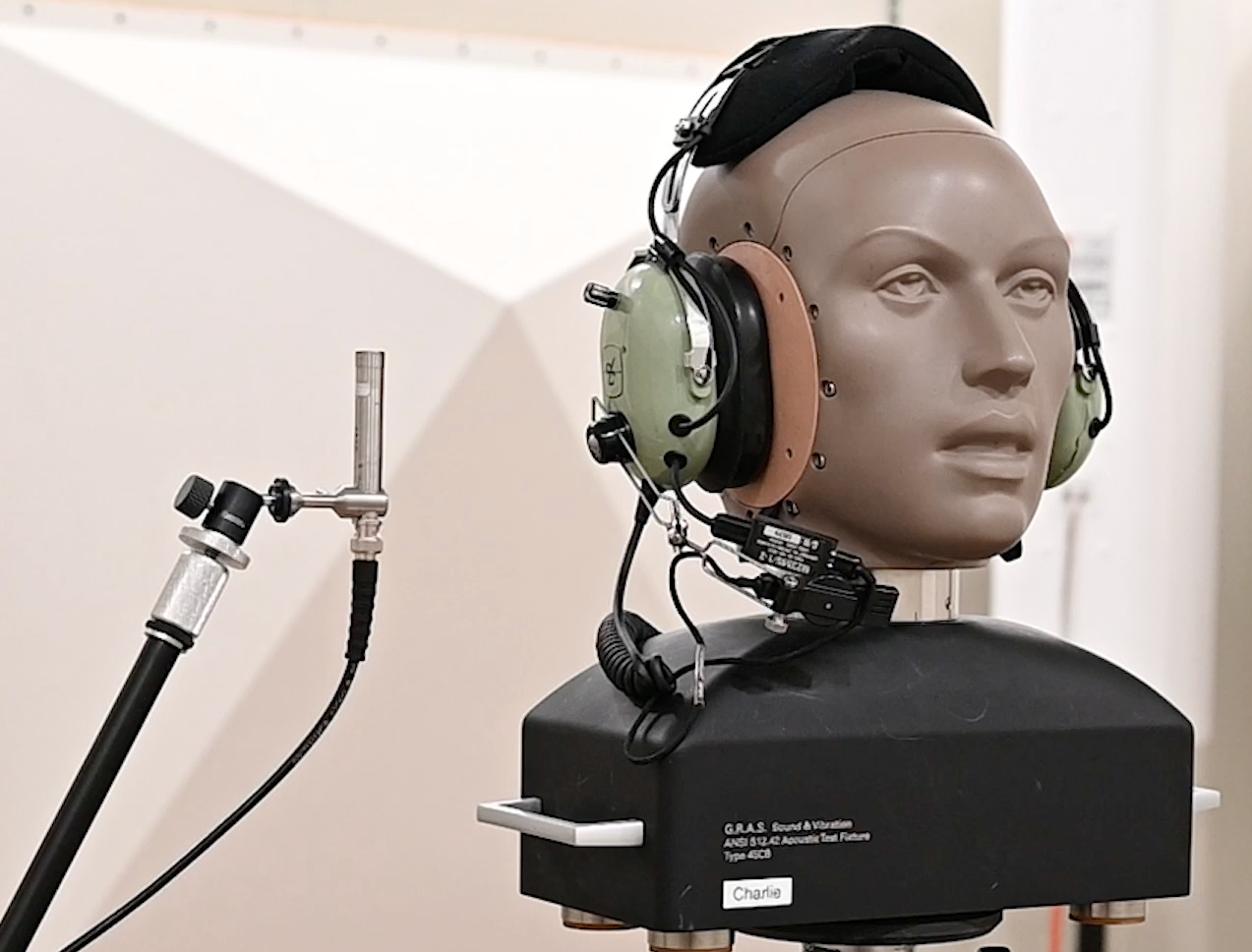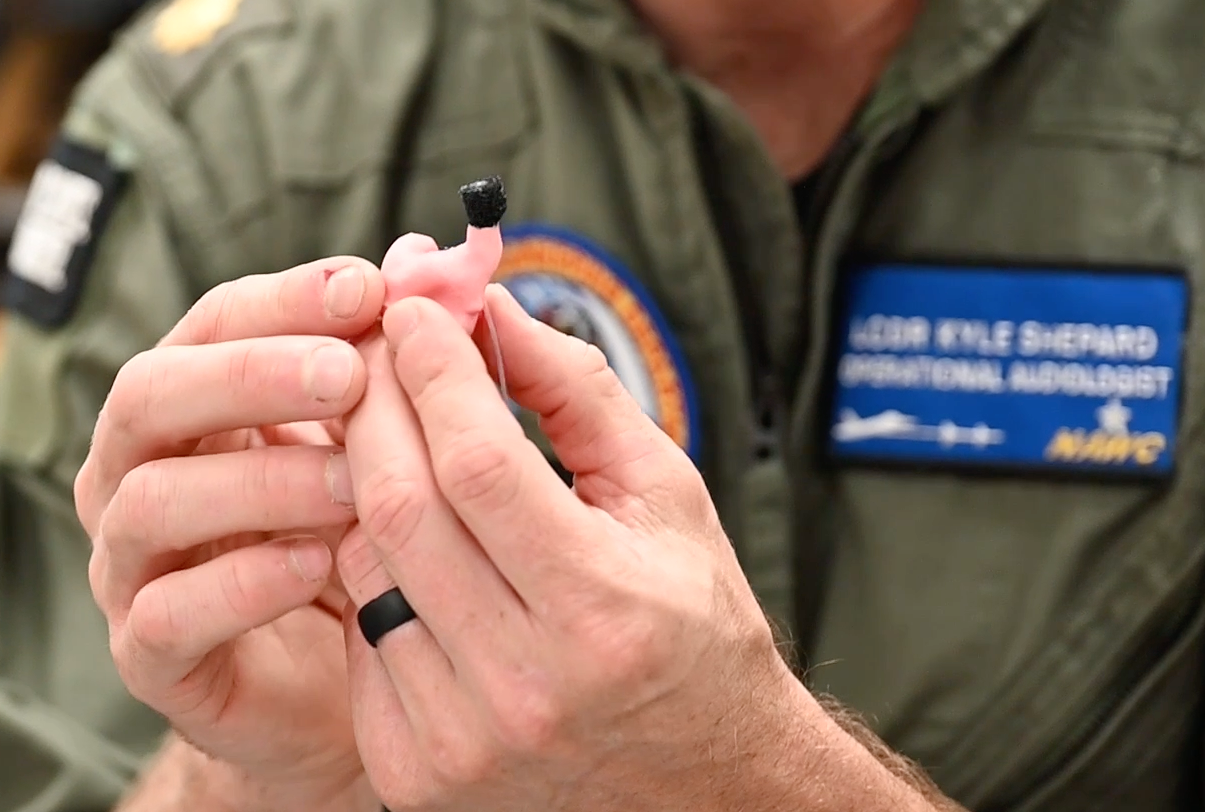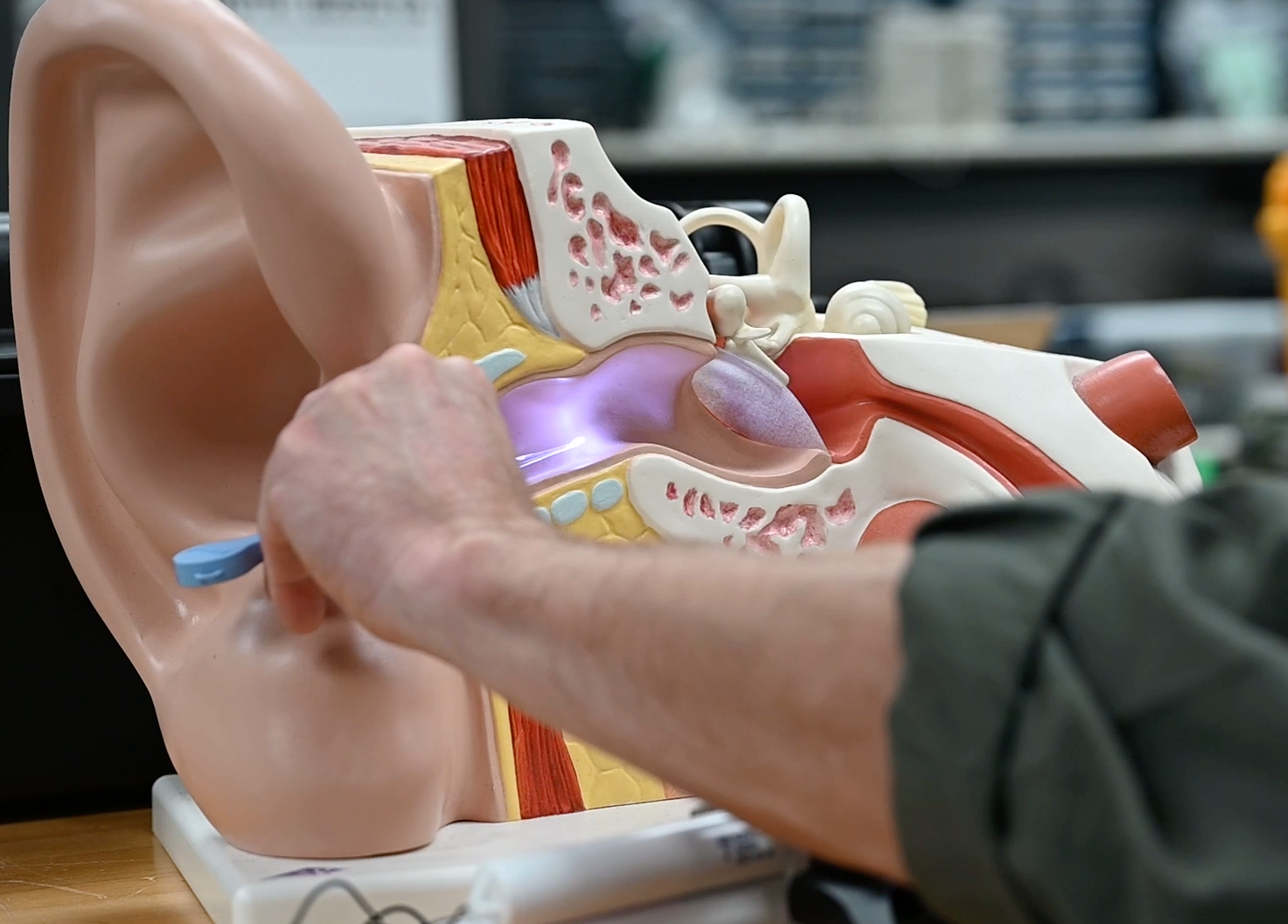
NAVAL AIR STATION PATUXENT RIVER, Md. – Lt. Cmdr. Kyle Shepard sticks a large probe into a sailor’s ear, watching on a computer screen as he maps the ear canal.
After about 10 minutes of precisely detailing out the sailor’s ear, Shepard pulls out the scanner. He’ll now be able to send off the data to create the Navy’s best attempt at reducing the military’s top injury.
Audiologists at Naval Air Warfare Center Aircraft Division (NAWCAD) at Naval Air Station Patuxent River are using scanners and silicone models to create earplugs that protect air crew from noise damage. Currently, earplugs are made by an outside company, depending on if it is made from an efit scanner or from the silicone model. But the audiologists are looking to be able to 3-D print the earplugs in house soon, saving the military cost and time.
Hearing damage is the military’s top injury, said Shepard, Helmet Systems and Auditory Performance lab branch head. Across the military, about 10 percent of service members per year will experience hearing damage, he said. That means every year, about 140,000 service members will experience a significant change in hearing from their baselines.
“It’s a problem but it’s a very understandable problem due to the unique nature that we operate in. And the fact that we can’t feel noise-induced damage happening,” Shepard said.
Take for example, a 2019 study in Annals of Work Exposures and Health of noise exposure on an aircraft carrier, which found that those on flight decks experience the most noise on the ship.
Hearing damage is not the same as hearing loss, Shepard said. But in the environments in which service members work, hearing damage can cause problems. Imagine needing to be able to differentiate between 15 and 16. Hearing damage could make it difficult to tell the two numbers apart over the radio, Shepherd said as an example.
One way to protect against hearing damage is wearing effective ear protection. At NAWCAD, audiologists like Shepard are looking to make personalized hearing protection more affordable and time efficient for military use.

There are two ways to make custom ear protection, which can be personalized to include communication capabilities, Shepard said. The first uses a silicone model. The second is through 3-D scanning.
If Shepard uses the silicone process, he’ll take an otoblock, a piece of soft material with a plastic wire attached to it, and place it in the ear canal around the second bend. The otoblock protects the inner ear from the silicone, which will then be placed using a silicone gun that pushes a pink, rubbery goo into the ear, filling up to the outer ear. The silicone then hardens while in the ear, which takes about five minutes. Then Shepard will remove it and ship the model to a company that will make the custom ear protection.
If Shepard uses the 3-D scanner, he’ll take a probe and guide it through the inner ear, getting to the second bend. Along the way, he’ll map the ear so a custom earplug can be made from the scan. NAWCAD spent seven years testing different scanners to determine which one would be the best for creating custom ear protection, making sure it would offer the same protection as those created from silicone models.
“In this project we’re looking more at [whether] 3-D scanned, printed plugs and manufacturers perform as well as physical impressions. And with the technology we’re looking to transition, they absolutely do and with less variance so they’re more consistent and more reliable across subjects, which is fantastic and always something we look for,” he said.
While the services do currently use custom ear protection, production is bottlenecked by the number of audiologists who can make the silicone models, Shepard said. The 3-D scanner option potentially could be used by more people with training, he added.

What 3-D scanning offers is a chance to reduce time, he said. While there is no difference in performance between an earplug made from the silicone model versus the scanner, the silicone model takes about 30 minutes while the scanning takes 10. Add in the fact that the silicone model needs to be mailed while the scanner can send the data electronically, and the scanning process takes a significantly shorter time, Shepard said.
NAWCAD also is hoping to incorporate 3-D printing, using printers currently used by military dentists to produce the customized ear protection instead of sending it to a third-party, Shepard said.
“But what 3-D scanning offers with 3-D printing is the ability to start testing hybrid materials,” he said. “We really want to enhance comfort here at NAWCAD where we consider all these factors to get the best hearing protector. And comfort is one that we want to address even more.”
The majority of ear protection in the forces comes in the form of a foam earplug. For one use, the foam earplug makes more sense financially, Shepard said. But foam earplugs are one time use, and even at $0.10 per foam earplug, it will become more costly than the $200 custom ear protection that can last for years.
Not to mention, foam earplugs are one size fits most, Shepard said, which means that for about a third of the military, the earplugs do not fit correctly because ears are too small or too large. Custom ear protection addresses those issues.
“So while we have a good system to ensure we are keeping our operators, our pilots, our warfighters as safe as possible and addressing needs as early as possible, we can still always do a better job of enhancing their ability to perform in these extreme environments,” Shepard said.





